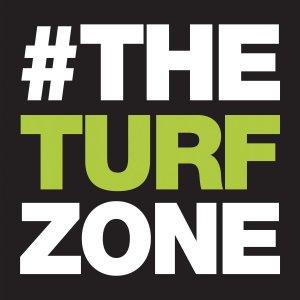The Turf Zone Podcast

Pennsylvania Turfgrass Council – European Invaders: Invasive Crane Flies Swarm the Region in 2020
Pennsylvania Turfgrass – Ben McGraw, Ph.D., Associate Professor of Turfgrass Science Aglobal pandemic, work restrictions, severe drought… and massive swarms of insects? As if the challenges in 2020 were not apocalyptic enough, many turfgrass managers from Ohio to the Canadian Maritime provinces observed hordes of European crane fly (ECF) emerging from the ground during September and October. The sheer size of the swarms, number of reports and samples submitted to the Turfgrass Entomology Lab at Penn State, as well as the detection of species in new areas would suggest that populations are increasing in Pennsylvania. Accurate pest identification and vigilance in monitoring are essential for managing ECF, which until now have enjoyed minor pest status in the Commonwealth. This article is intended to serve as a guide to understanding ECF outbreaks and what to look for moving forward. What is a crane fly? Crane flies are moderate sized, slender insects that appear to many to resemble a “gigantic mosquito” or “daddy-long legs” (cellar spiders) (Fig. 1). There are approximately 15,000 species of crane flies (or dipterans from the family Tipulidae) on the planet, with ~ 350 species in Pennsylvania. Most are associated with moist environments, and adults can often be found flying around turf near bodies of water or in open fields with moist soils. Only two of the 15,000 species are horticultural pests. Unfortunately for turfgrass managers, both are established in North America and feed on turfgrasses. In areas where ECF are present, no turfgrass manager is immune to the potential for turf loss, as neither species has shown a preference for turfgrass species (Pesho et al. 1981) or mowing height. Rather ECF can damage home lawns, pastures, athletic fields, and golf courses. Their distribution within a site is most closely associated with soil moisture (Peterson et al. 2013). Adults pose a nuisance to homeowners, athletes, and golfers, but cannot feed and live for only several days to weeks (Rogers 1933). Damage to turfgrass is caused by the larvae, commonly referred to as “leatherjackets.” Leatherjackets are legless, tan to dark gray maggots (Fig. 2). Their worm-like bodies are slightly cone-shaped from the head, becoming tapered toward the rear of the abdomen. Leatherjackets develop through four larval instars by feeding on both roots and foliage with hook-like mouthparts. Most of their time is spent in the top inch of the soil, coming to the surface to feed at night or on overcast days. Large rainfall events may cause leatherjackets to leave their burrow, where they may be washed off the turf onto impervious surfaces. Heathy turf is capable of withstanding moderately dense leatherjacket populations, though stands may exhibit thinning or collapse with additional stressors (e.g. drought, heat) (Fig. 3). Similar to white grub infestations, vertebrate predators (birds, skunks, racoons) may cause the most substantial damage to the turf when they forage for larvae in spring. Invasive species The two European pest species have been introduced in North America on multiple occasions. Tipula paludosa, or “the European crane fly” was possibly introduced as early as 1880 in Newfoundland, but was first detected in North America in 1955 on Cape Breton Island, Nova Scotia, followed by introductions in British Columbia (1965) and the Great Lakes region (1996). Tipula oleracea, “the marsh crane fly” has also been introduced on at least three separate occasions, though much more recently (1998–2004) in the same geographical regions. What do these areas have in common? Each represents a port of entry into North America where hitchhiking insects can be released. Fortunately for these insects, they found themselves in an environment with similar climatic conditions as in their native regions (high annual precipitation). ECF eggs are placed in the top half inch of the soil and req...






 Visit Podcast Website
Visit Podcast Website RSS Podcast Feed
RSS Podcast Feed Subscribe
Subscribe
 Add to MyCast
Add to MyCast